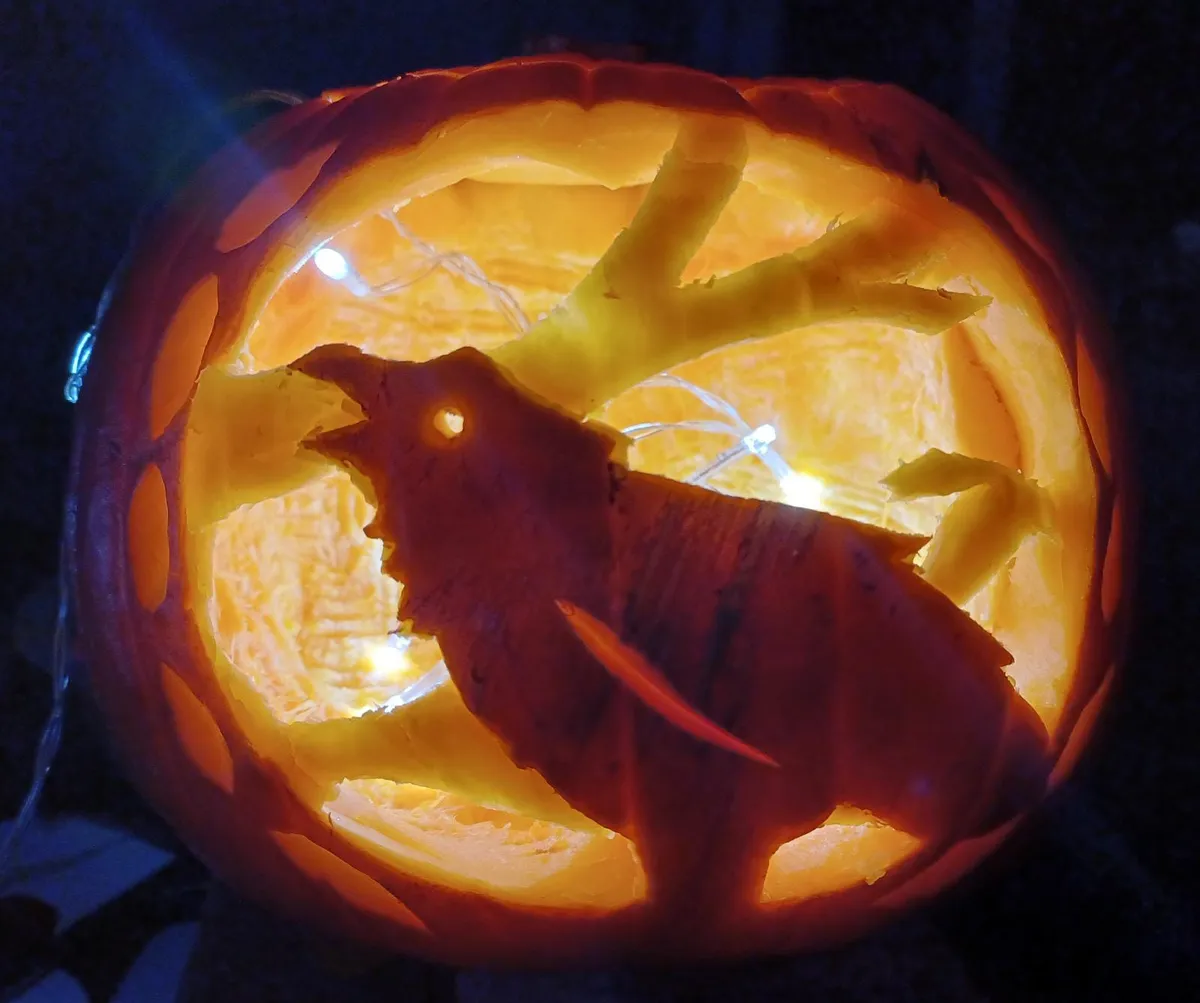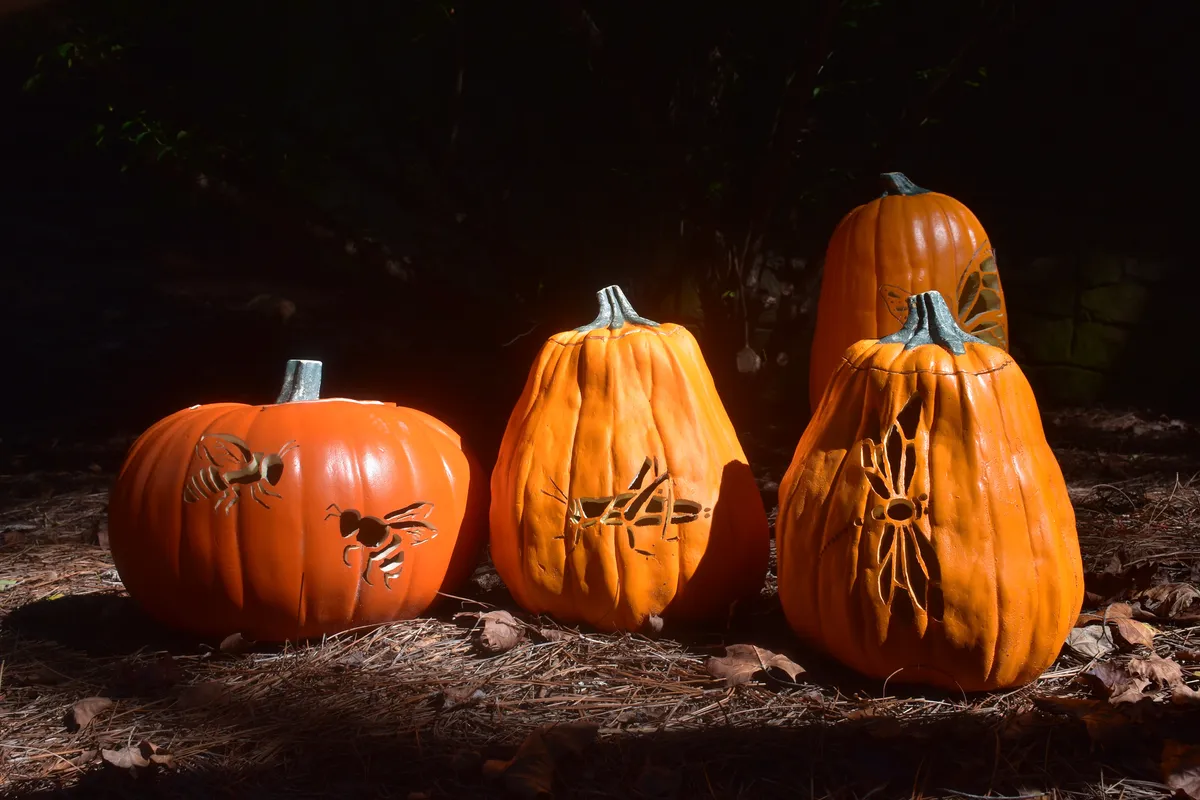Pumpkin carving is a great activity to for both adults and (supervised) children, and as wildlife lovers, we particularly are always thrilled to see animal or plant carvings.
We've gathered together this range of wildlife-themed carvings by BBC Wildlife staff and readers, plus some additional stock images, to provide you with inspiration this Halloween.
If you want to try something different, check out BBC Good Food magazine's guide to nine things you can carve that aren't pumpkins, such as peppers, pineapples or melons!
Share your images with us and you might see your pumpkin carving featured in this article!
The origins of Halloween and pumpkin carving
Halloween celebrations are thought to have pagan roots in the Celtic festival of Samhain (which translates to ‘summer’s end’). It falls on 31 October every year, and is followed by All Saints' (or All Hallows’) Day on 1 November which commemorates saints of the Christian church. Halloween is a contraction of All Hallows’ Eve.
Traditionally, it's thought the winter period would begin on 1 November, and during the festival of Samhain, the souls of the dead would return to their homes. Bonfires were lit and costumes were worn to frighten away evil spirits, and to hide from the ghosts.
Pumpkin carving is one of the main traditions associated with Halloween. It began in Ireland and comes from a folktale about a man carrying a turnip, which was carved out and contained a glowing coal, into the afterlife.

When Irish immigrants travelled to America, they brought this Halloween custom with them and it changed slightly to carving out a pumpkin, which is much bigger and easier to carve out, and became known as the ‘Jack-o’lantern’. This was then brought back across the pond to the UK.
The increasing popularity for celebrating Halloween and carving pumpkins has provided a chance for diversification for British farmers, as presenter Adam Henson discusses in his article for BBC Countryfile magazine.
Other modern Halloween celebrations include trick-or-treating, costume parties, and watching scary movies.
Can pumpkins be left out for wildlife?
If you don't want to eat your pumpkin, or it's gone a little stale after carving, you can reuse it as a bird feeder or you can leave it out to be eaten.
However, there are some reports that pumpkins can cause stomach issues and diarrhoea in hedgehogs, to it's best to put them out of reach of hedgehogs, such as hanging them from a tree or putting them on a birdtable.

What can I do with the pumpkin innards after carving?
Both the pumpkin flesh and pumpkin seeds can be used in a variety ways, and are great ways to minimise food waste this Halloween. However not all shop-bought pumpkins are suitable for consumption, so it's worth checking the labelling.
Our colleagues on BBC Countryfile and BBC Good Food magazines have got a wide range of recipes on their websites that use pumpkin, we've shared some of our favourites below:
Recipes using pumpkin from BBC Countryfile magazine:

Recipes using pumpkin from BBC Good Food magazine:
Piping plover pumpkin carving, by Monica Fromberger (c/o the Ontario Piping Plover Conservation Program)

Emperor moth, by Ayla Webb

Anglerfish, by Laura Harbard

Octopus, by Faryn Hughes

Rosy starling, by Liam Andrews

Spider, by Lewis Jones

Death's-head hawk-moth, by Apithanny Bourne

Anglerfish, by Leoma Williams

Corvid, by Alice Edwards at the RSPB

Woodcock, by Jenny Shelton at the RSPB

Waders, by Chantal Macleod-Nolan at the RSPB

Swifts, by Guy Anderson at the RSPB

Bats, by Sara Miller at the RSPB

Under the sea, by David Badger at the RSPB

Plains zebra, by BBC Wildlife team member Megan Shersby (during her university dissertation research on plains zebra behaviour)

Fly agaric, by BBC Wildlife team member Megan Shersby

Plus, additional stock images for even more inspiration:














